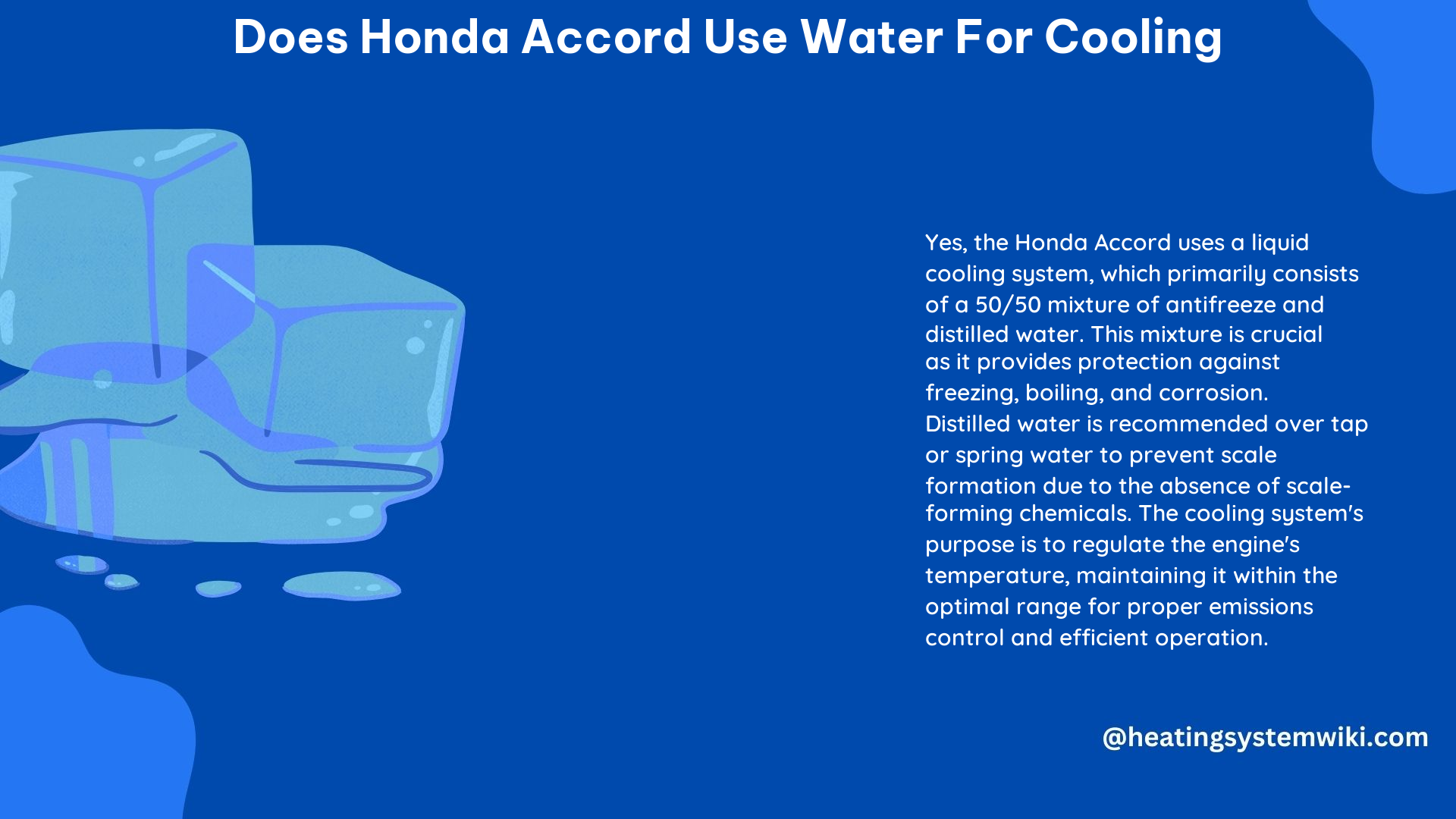The Honda Accord, a popular and reliable mid-size sedan, utilizes a liquid cooling system that primarily relies on a mixture of coolant and water to regulate the engine’s temperature. This cooling system plays a crucial role in maintaining the engine’s optimal operating conditions, ensuring efficient performance and longevity.
Understanding the Honda Accord Cooling System
The cooling system in a Honda Accord consists of several key components, each with a specific function:
- Water Pump: This component is responsible for continuously circulating the coolant throughout the cooling system, ensuring the efficient transfer of heat.
- Thermostat: The thermostat acts as a temperature regulator, opening and closing to maintain the engine’s optimal operating temperature range.
- Radiator: The radiator is a heat exchanger that dissipates the heat from the hot coolant, allowing the system to cool down and maintain a safe operating temperature.
- Coolant Reservoir: This component stores the coolant and allows for expansion and contraction as the system heats up and cools down.
Coolant Composition and Maintenance

The Honda Accord’s cooling system is designed to use a specific coolant mixture recommended by the manufacturer. This coolant is typically a 50/50 blend of antifreeze and distilled water, which provides the necessary protection against corrosion, boiling, and freezing.
Coolant Type
Honda recommends using a Honda-branded or Honda-approved coolant for their vehicles. These coolants are formulated to be compatible with the materials and components used in the Accord’s cooling system. Some examples of suitable coolants include:
- Honda Genuine Coolant
- Prestone Antifreeze/Coolant for All Vehicles
- Peak OET Blue Antifreeze/Coolant for Asian Vehicles
It is important to note that using a non-silicate, aluminum-safe coolant is generally accepted as compatible with the Honda Accord’s cooling system.
Coolant Flushing and Replacement
Regular maintenance of the cooling system is crucial to ensure its efficient and reliable operation. Honda recommends flushing the cooling system and replacing the coolant every 3 years or 30,000 miles, whichever comes first. This interval helps to remove any contaminants that may have accumulated in the system and maintain the coolant’s protective properties.
When flushing the system, some owners prefer to use distilled water, while others recommend using a dedicated radiator flush and cleaner product. Regardless of the method, it is essential to ensure that the system is properly burped (air-purged) to prevent any air pockets that could compromise the cooling system’s performance.
Technical Specifications
To summarize the key technical specifications for the Honda Accord’s cooling system:
| Specification | Recommended Value |
|---|---|
| Coolant Type | Honda-recommended or compatible non-silicate coolant for aluminum engines |
| Coolant-to-Water Ratio | 50/50 mixture |
| Flushing Interval | Every 3 years or 30,000 miles |
| Burping the System | Removing air from the cooling system is essential for proper operation |
DIY Cooling System Maintenance
Maintaining the Honda Accord’s cooling system can be a straightforward DIY task for those with basic mechanical skills. Here’s a step-by-step guide:
- Gather the necessary materials: Honda-approved coolant, distilled water, a funnel, and a container for used coolant.
- Locate the radiator cap and drain plug, typically found at the bottom of the radiator.
- Place the container beneath the drain plug and remove it to drain the old coolant.
- Once drained, close the drain plug and add the new coolant and distilled water mixture to the radiator using the funnel.
- Fill the coolant reservoir to the recommended level.
- Start the engine and let it run for a few minutes to circulate the coolant.
- Check for any leaks and ensure the coolant level is correct in both the radiator and reservoir.
- Burp the system by running the engine with the heater on and the cap off the reservoir. This will allow any trapped air to escape.
- Once no more air is escaping, replace the radiator cap and reservoir cap.
By following these steps, you can effectively maintain the Honda Accord’s cooling system and ensure its optimal performance and longevity.
Conclusion
The Honda Accord’s cooling system is a critical component that relies on a mixture of coolant and water to regulate the engine’s temperature. Understanding the system’s key components, recommended coolant types, and maintenance procedures is essential for ensuring the Accord’s reliable and efficient operation. By following the guidelines outlined in this guide, Honda Accord owners can confidently perform routine cooling system maintenance and keep their vehicles running at their best.
